13:45 The Paris speedboat docked at the Port de Suffren pier under the Eiffel Tower. Walking off the cruise ship, I saw a piano on the pier.
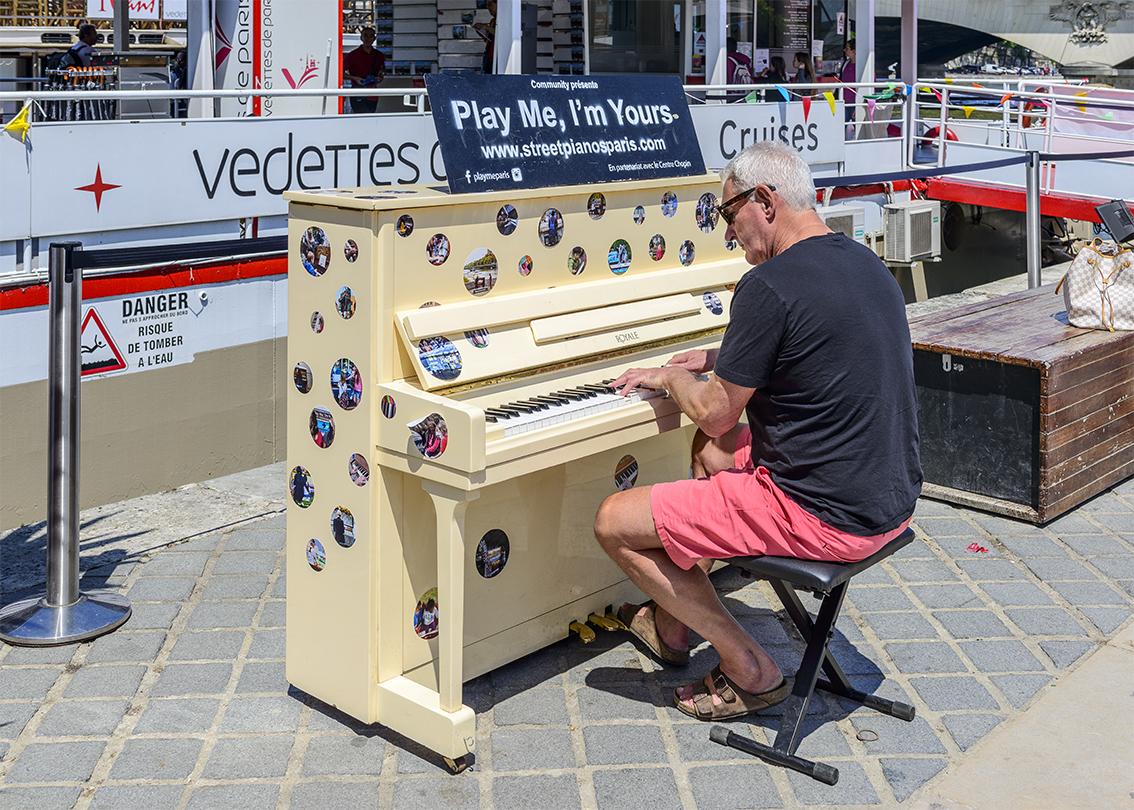
The French are really romantic and actually drag the piano to the pier.
Where to go? After resting at noon, I sat on the cruise for another hour, it was time for a walk. I thought I should take them to see the Pont Alexandre III, and I wanted to walk along the Seine myself.
We walked east along Quai Branly, past the Brownlee River Bank Museum, over the Alma Bridge, and in front of us was the Orsay Quay Avenue.
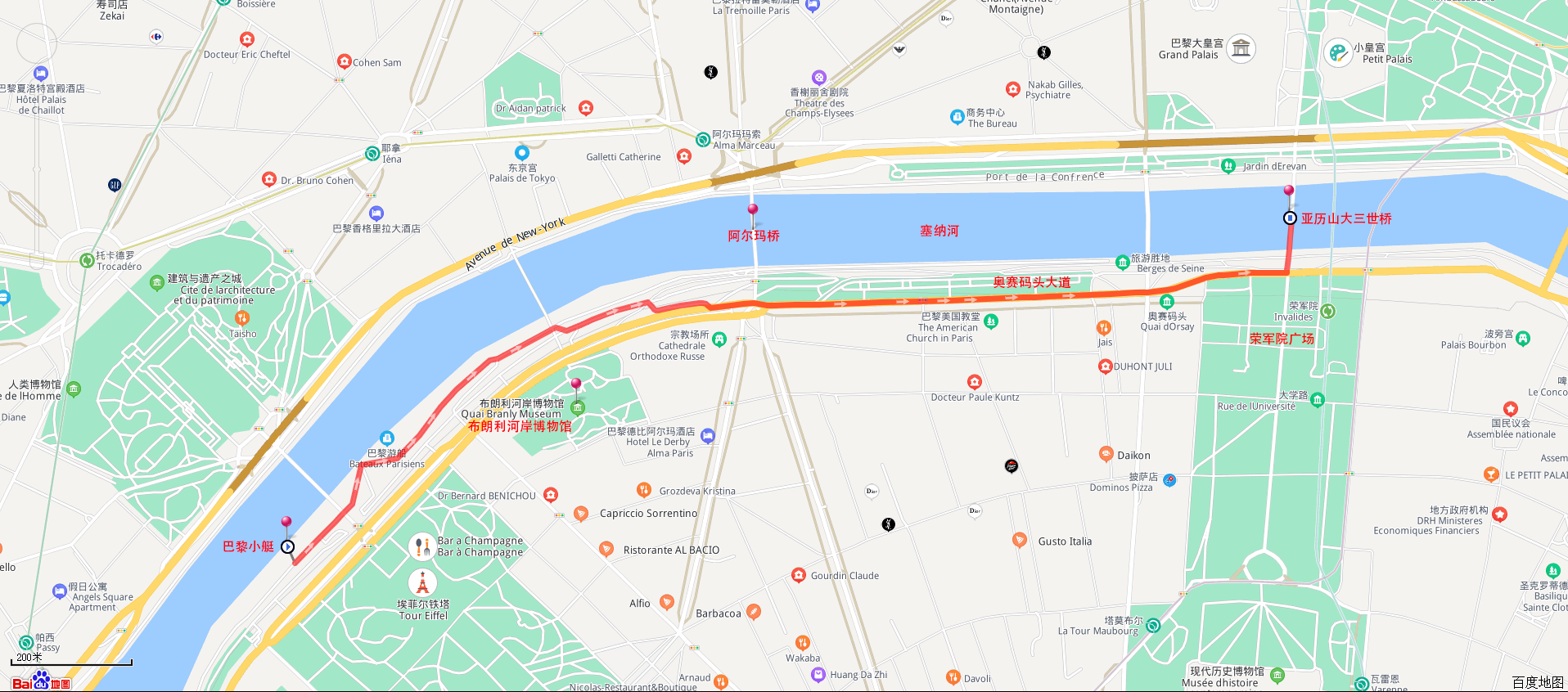
Fans' cars drove by from time to time on the Avenue d'Orsay, sticking the French flag out of the window, honking their horns and singing all the way. It seems that they all rushed to the Champ de Mars to watch the European Cup football match. Even us passersby became hot-blooded.
As I approached the Invalides Square, I saw a sculpture "Armistice, TRUCE" on the side of the road.
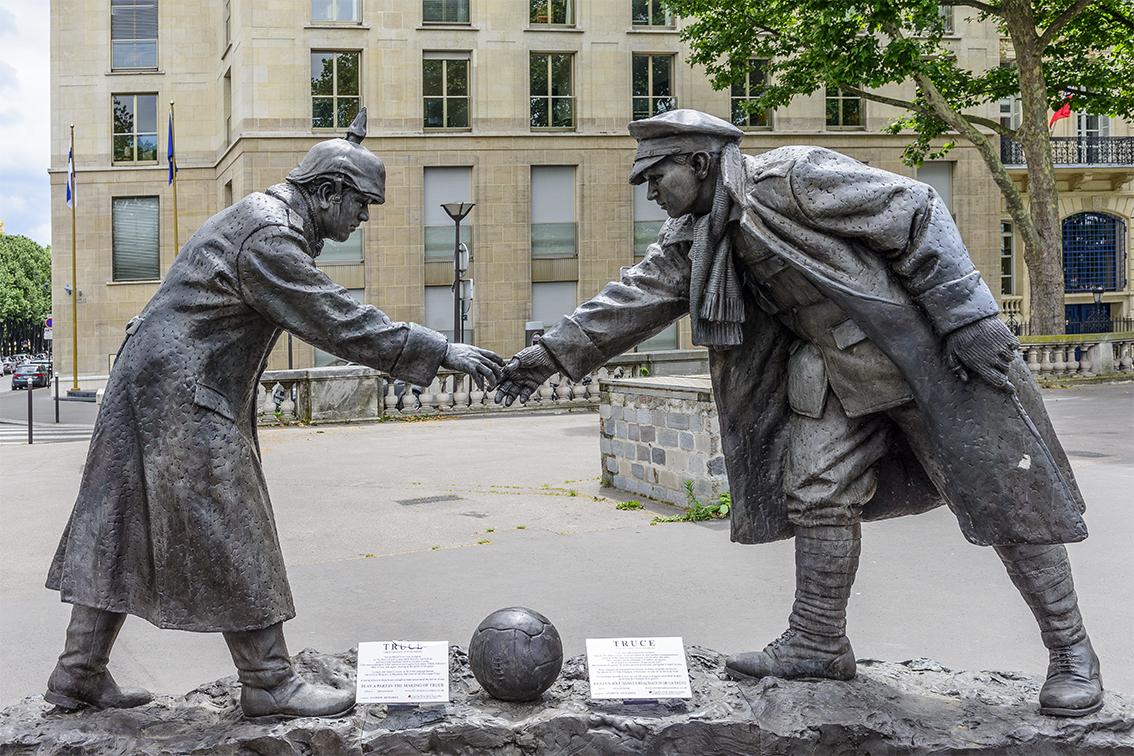
Two soldiers are about to shake hands with a football in the middle. What are they doing?
On December 25, 1914, British and German soldiers who were facing off on the front lines of World War I spontaneously ceased fire. The two sides held a football game on the battlefield and exchanged gifts to celebrate Christmas. This became the most mysterious story in the First World War and the most touching page.
On Christmas Eve, the German officers and soldiers took out their carefully decorated Christmas tree with candles and placed it on the low wall of the trench. Hundreds of candles reddened the trench and shone on the excited faces of the officers and soldiers. The British officers and soldiers also saw the light, but they couldn't figure out what the Germans were doing. The British surveillance post reported the anomaly to his superiors and was ordered: It may be a hoax, don't fire, keep an eye on them.
Then, the British officers and soldiers heard the sound of the Germans celebrating Christmas. Lieutenant Kennedy, who participated in the war, recalled: "On Christmas night, the singing and laughter of the trenches opposite us drifted towards us, and I suddenly heard a German shouting: 'Merry Christmas for the British!' At this time, we realized that the Germans were celebrating Christmas night to the fullest, and our emotions were immediately infected. A British soldier shouted: 'You too!' Then, the two sides sang Christmas carols together." British and German soldiers put down their weapons, stepped into the desolate no-man's land, and came to the land where the shells were raised, and shook hands with each other to bless each other. In this uniquely relaxing moment in World War I, soldiers from both armies sang Christmas carols together, smoked cigarettes together, admired pictures of their families, and even played football, of course not real football, they played empty cans of beef as football.
The French film "Merry Christmas, Joyeux Noël" is based on a true story that happened on the battlefield on Christmas Eve 1914. Alas! Who among ordinary people likes war! How good is peace!
This is the poster for the French movie "Merry Christmas, Joyeux Noël".

I was a little in a trance. I just saw French fans who were as happy as a holiday, and suddenly football brought me to the historical memory of "war and peace". Let's continue to be happy! This is a photo of the French fans and two members of the group.

The French guy is really handsome and warm.
At the Alexandria III Bridge, the group members took pictures and played, and I took the time to rest. Then, I took them to Churchill Street and Champs Elysees.
It was almost time, so I looked it up on Google Maps. Take the number 72 bus to Notre Dame Cathedral.
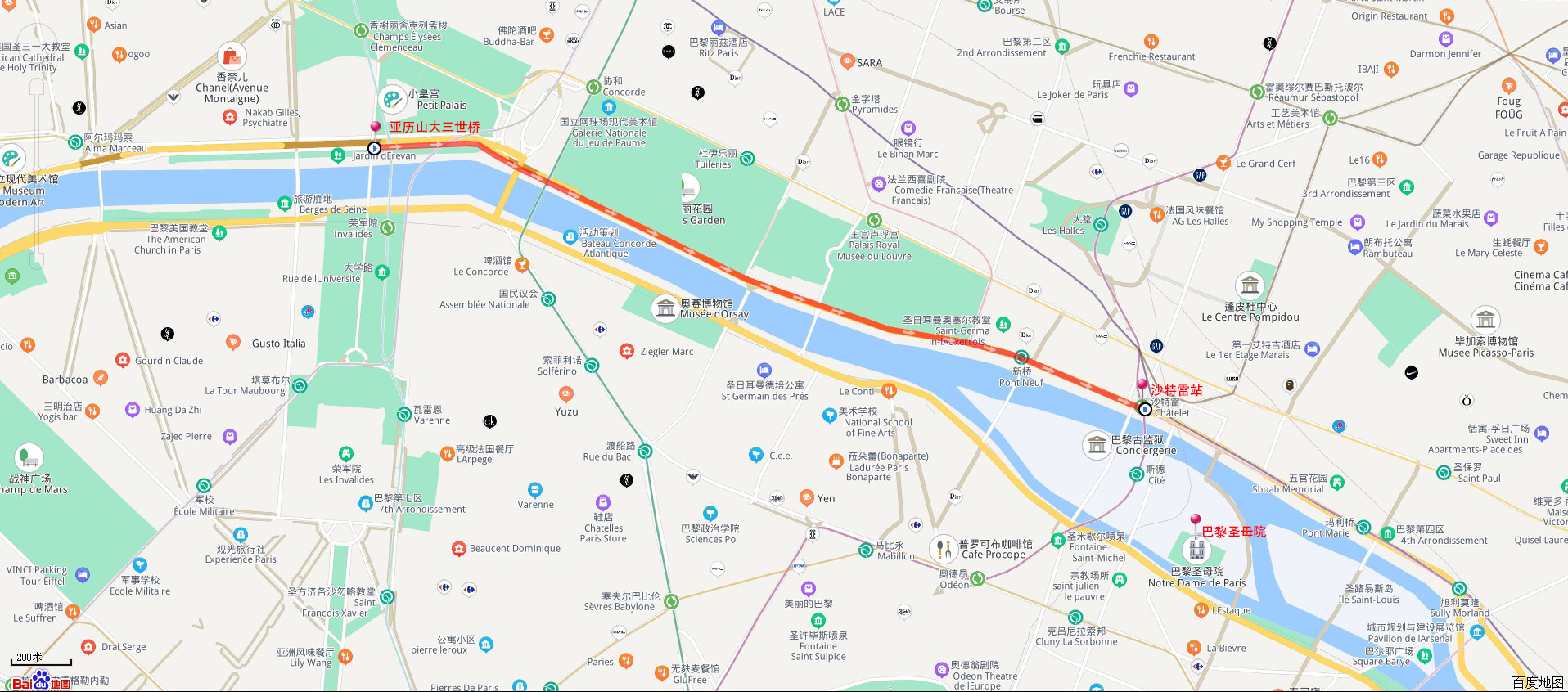
The number 72 bus stop is at the bridge head on the north side of the Alexander III Bridge. There are indicators on the poles of the stop sign to indicate the arrival time of the next bus. Soon the bus came. After getting on the bus, buy a ticket from the driver for 2 euros per person, and then type the ticket on a machine yourself. There were not many people on the bus, and after a while, we had seats.
At the Châtelet stop on Quai de Gesvres, get off. A little further ahead is the Pont Notre-Dame on the Seine. The Pont Notre-Dame is a steel arch bridge, rebuilt in 1914. At the other end of the Pont Notre-Dame is the Quai de la Corse on the Ile de la Cité.

This is me standing on the bridge of Notre Dame in the corner of the island of West Causeway.
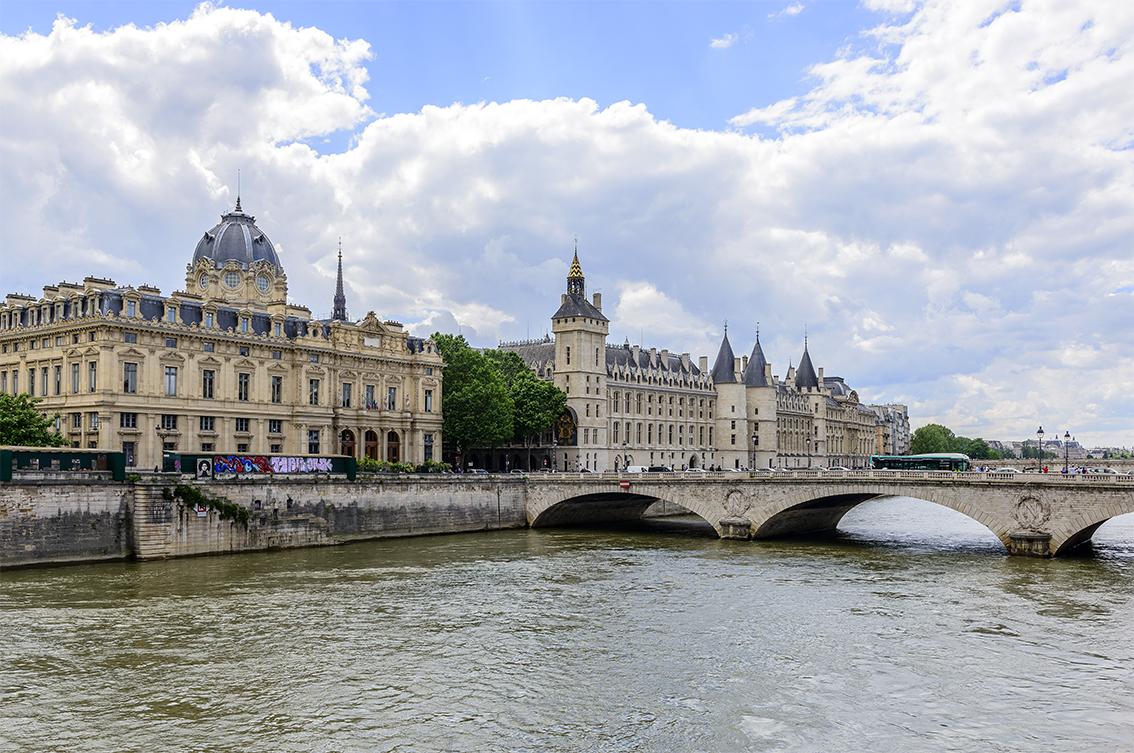
The bridge in the distance is called the Exchange Bridge, and the houses on the west side of the Exchange Bridge are the famous Prison of Paris.
Pont au Change, rebuilt in the mid-19th century (1858-1859). Before the 17th century, Parisian jewellery and bullion merchants established a jewellery and bullion market on this bridge, hence the name Pont au Change.
The Conciergerie was built in the 14th century and is one of the former royal palaces and prisons in Paris. This is a four-story Baroque building. The gray and white colors are very solemn, and the shape of many circular spires highlights its solemnity and desolation. It used to be the luxurious bedroom of the French royal family. At the end of the 14th century, the French kings moved to the Louvre and Château Vincent, which gradually became a place and prison for judicial activities. During the French Revolution, the Prison became one of the important places of detention and had a revolutionary court. Many prisoners were sent to the guillotine from here to various parts of Paris. One of the prisoners was Queen Marie-Antoinette of Louis XVI. During the Restoration of the Dynasty, the king ordered that the cell where Marie-Antoinette lived be converted into a church of atonement, which is now open to tourists.
We walked across the Bridge of Notre Dame and landed on the island of Siti (Google Maps translates as "Side Island").
The Isle of the Seine is the geographical center of Paris and the historical birthplace of Paris. The name "Paris" first came from the Parisii fishermen on the Isle of the Seine in the 3rd century BC. In the 1st century BC, the Roman Empire invaded and connected the small island in the Seine with the left bank with an embankment, beginning the long process of radiating the city to the surrounding areas. In the 6th century, Charles the Great built the capital on the Isle of the Seine, and Paris, as the capital of France, began to take shape. In the 12th century, Louis VII began to build the magnificent Notre Dame de Paris on the Isle of the Seite, and the Isle of the Seite has since become the center of the Parisian faith. The Cite Island guards the heart of the city, but it is independent. It is separated from the right bank of the nobility (north of the Seine) and the left bank of the petty bourgeoisie (south of the Seine), and has become a pure land for cultural giants to live in seclusion. Rousseau, Zola, Hugo, Balzac, Maupassant, Monet, Gauguin, Cezanne, Van Gogh... They thought, created, and produced the most proud wealth of France on the island.
We walked along Rue La Quoz and turned onto Rue de la Cité to see Notre Dame Cathedral.
This is Notre Dame Cathedral I photographed on top of the Montparnasse building.

To the square in front of Notre Dame Cathedral.
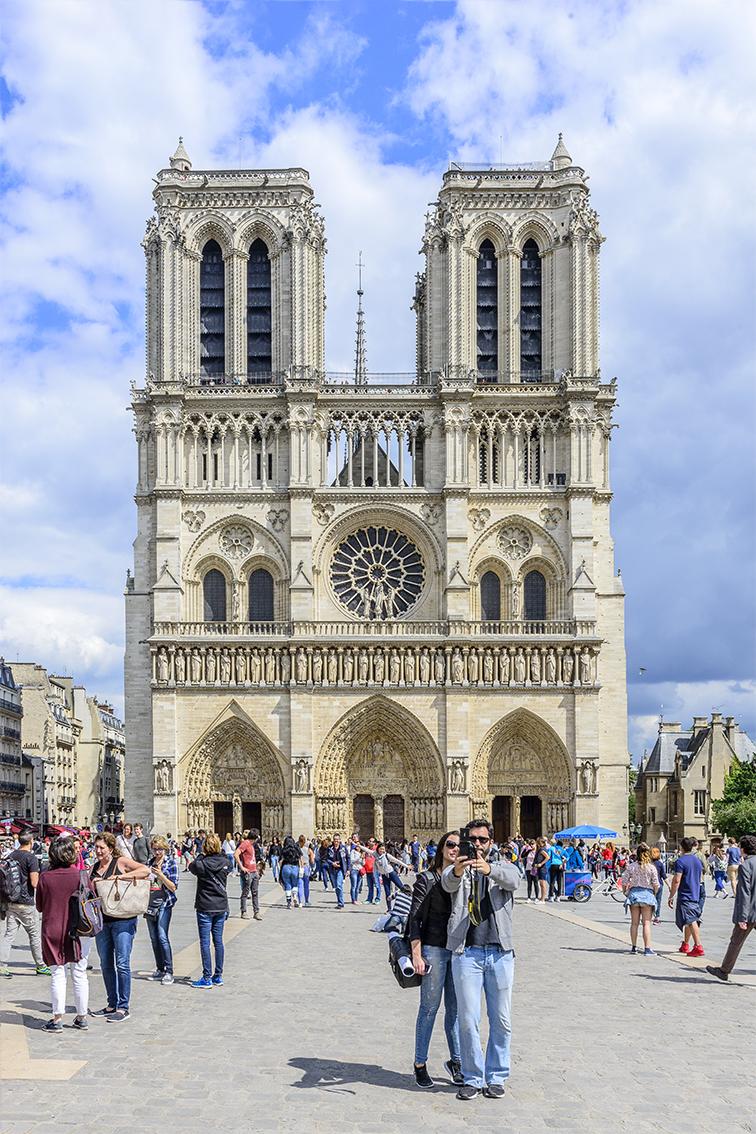

Notre Dame de Paris was built in 1163 by the decision of the Archbishop of Paris, Maurice de Sully, and the entire church was completed in 1345, which lasted more than 180 years. Notre Dame de Paris is a typical Gothic church, all made of stone, which is characterized by towering and tall, splendid, and the whole building is solemn and harmonious. Hugo likened it to "a symphony of stones" in his book "Notre Dame de Paris".
The facade of Notre Dame de Paris is 69 meters high and is divided into three floors by three horizontal decorative strips, with towers above it.
This is the lower part of the front.
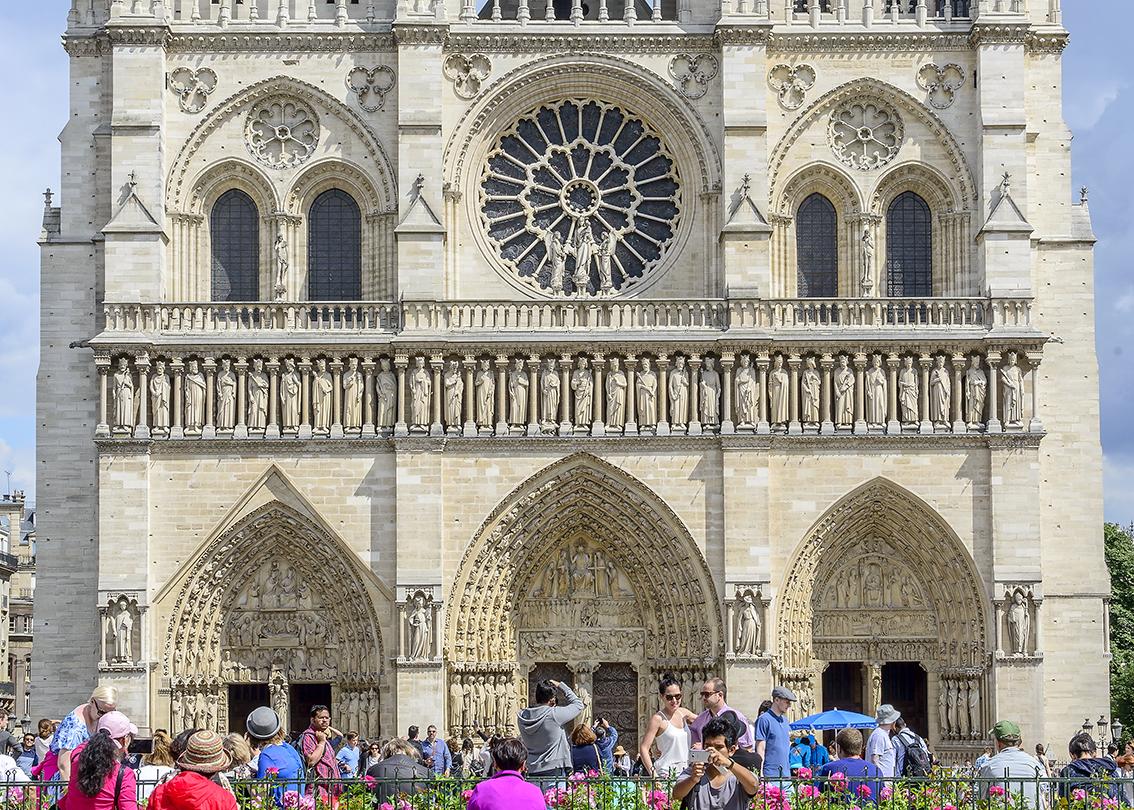
There are 3 peach-shaped doorways on the ground floor. The central arch describes the "Last Judgment" of Jesus in heaven. The oldest statue of the church (1165-1175) is located in the arch on the right, describing the story of St. Anne and the baptism of Archbishop Sully for Louis VII (Louis VII, who ordered the construction of Notre Dame in the 12th century). On the left is the Virgin'sportal, depicting the crucifixion and resurrection of the Virgin, surrounded by saints and angels.
Above the arch is the Galerie des Rois, which displays statues of 28 kings from the Old Testament period. During the French Revolution in 1793, the original statue was mistaken for a French monarch, so it was destroyed and demolished. It was only found in 1977 and is now in the Musee de Cluny. Later, the statue was re-engraved and put back in its original position.
The second floor above the "Promenade" is flanked by two huge stone mid-lattice windows, with a stained glass window in the middle. The stained glass window is about 10 meters in diameter, commonly known as the "rose glass window", built in 1220-1225. In the center is enshrined the Virgin and Child, with statues of angels on both sides. On both sides are statues of Adam and Eve.
This is the upper part of the front.
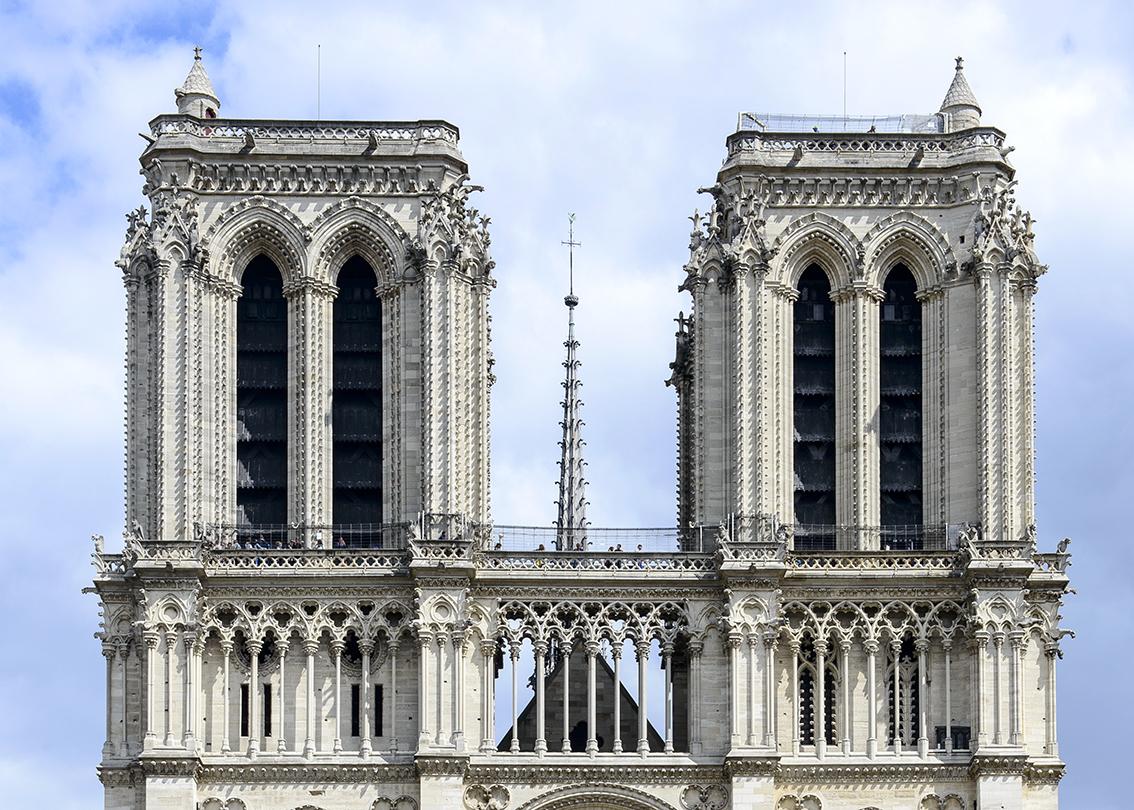
The third floor is a row of slender carved arched stone railings. On those stone railings, the architect created an illusory world composed of many gods and spirits. These stone elves have been squatting here quietly for hundreds of years, watching the ups and downs of the Parisians under their feet.
On the top of the left and right sides are towers without spires. One of the towers hangs a large bell, the one that Quasimodo struck in the book "Notre Dame de Paris". Above the atrium is a spire 90 meters high, and the top of the tower is a slender cross. It is said that the cross used by Jesus when he was tortured and his crown were sealed in a ball under this cross.
I saw the movie "Notre Dame de Paris" and was very impressed. This is a love movie directed by Jean de la Noire and starring Gina Laurobrigida. Based on the masterpiece of the same name by the French writer Victor Hugo, the film tells the peculiar love story between Cassimodo, the bell ringer of Notre Dame de Paris, and the gypsy girl Esmeralda.
This is a still from the movie "Notre Dame Cathedral".
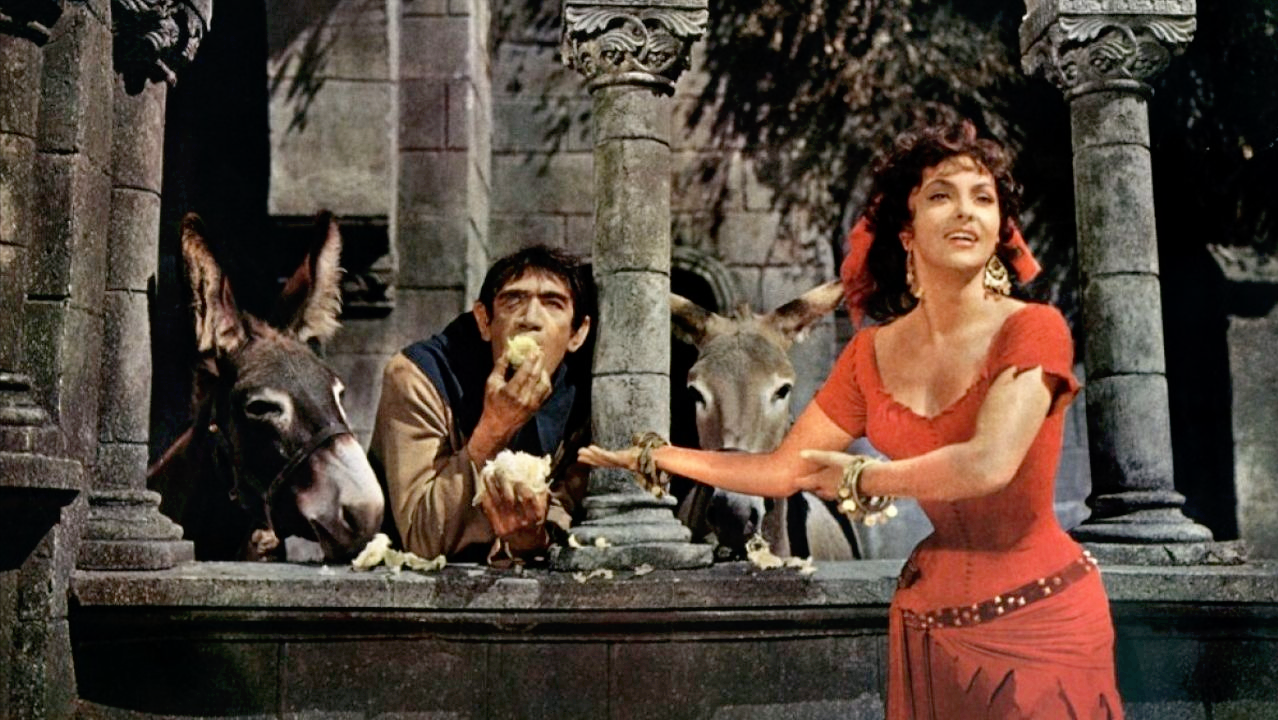
Walk into Notre Dame Cathedral.

On the left and right are arcades, the roof in the middle is 35 meters high, and the two rows of columns are 24 meters high, leading straight to the roof. The distance between the arcades is less than 16 meters, creating a narrow and towering space that gives the illusion of approaching heaven. Everywhere, devout believers can be seen praying devoutly with their hands folded against their jaws and their eyes closed. This photo was taken while I was visiting Paris in 2012, and it is now banned.
This is the south side of Notre Dame.
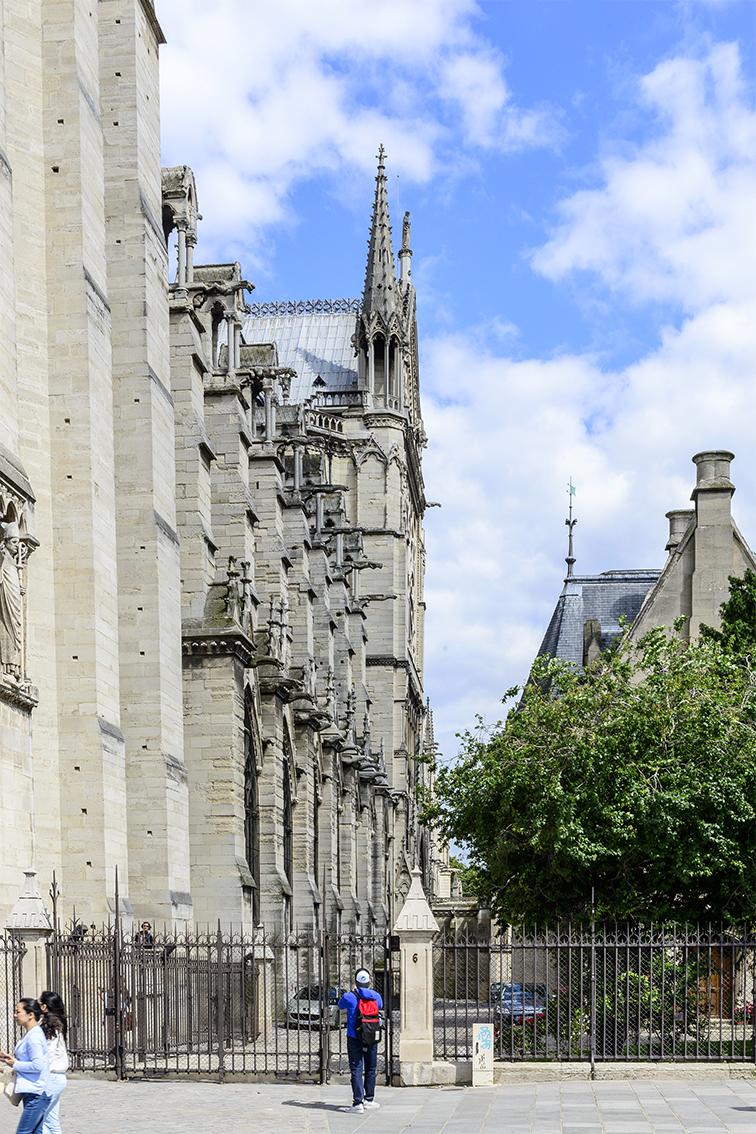
We walked east along the trail on the south side of Notre Dame.
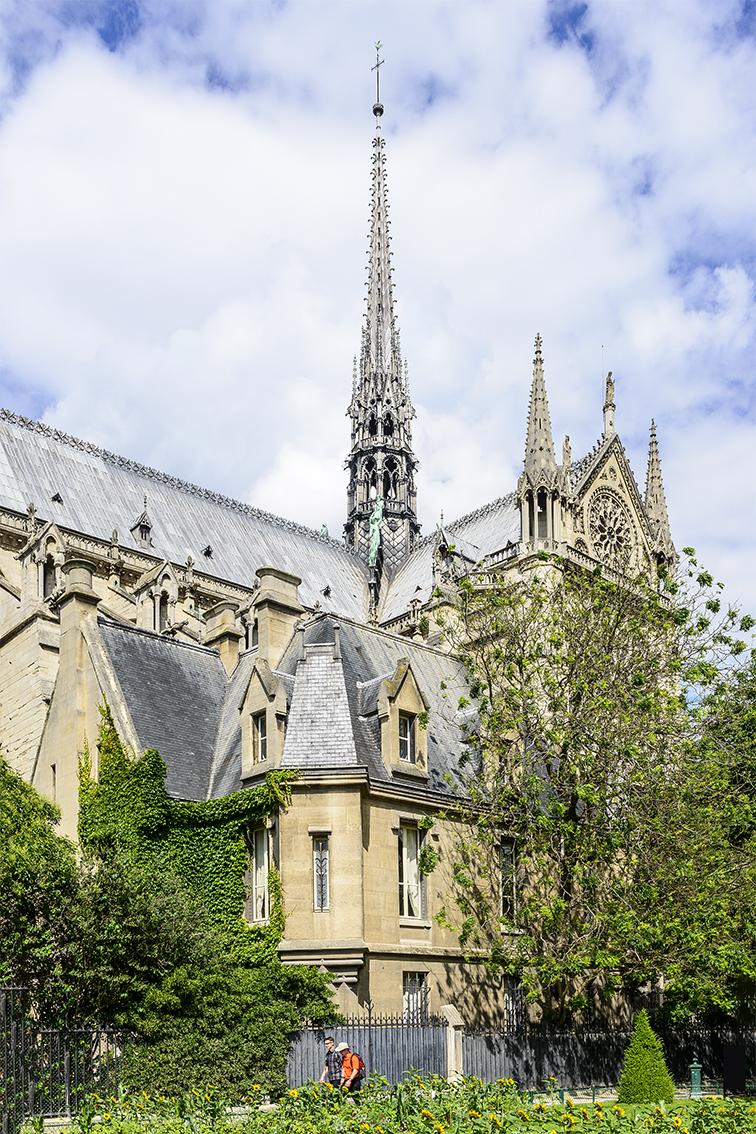
There is a statue of Pope Paul II in the small garden.
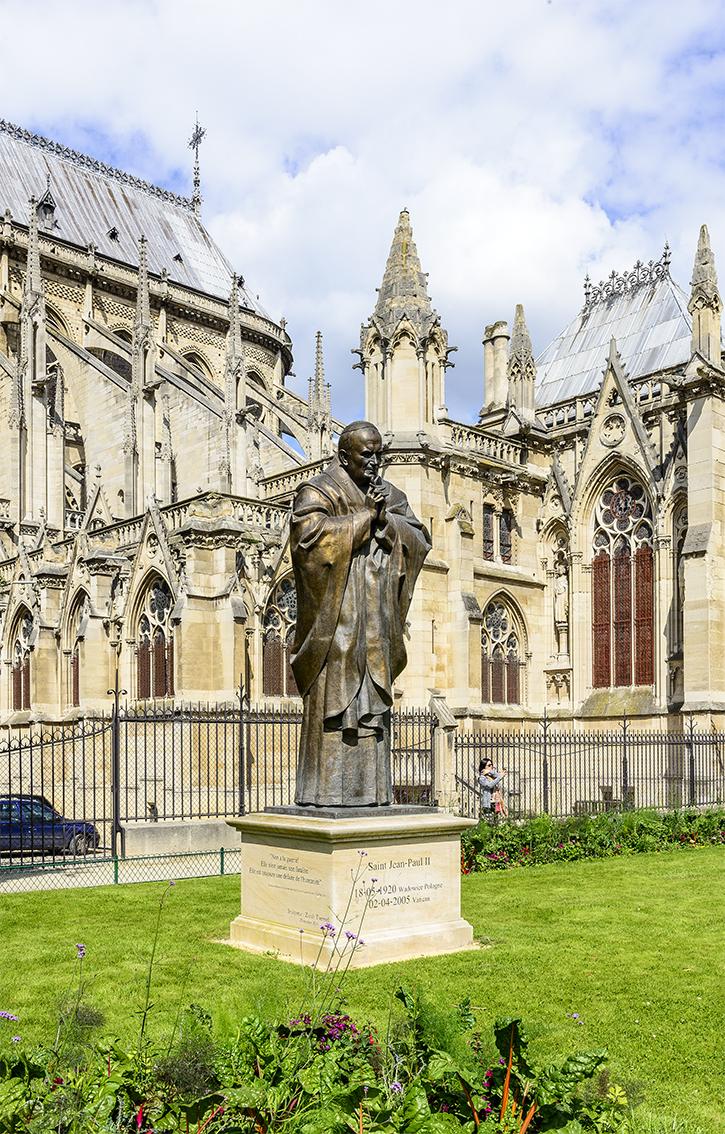
Pope Paul II, formerly known as Carol Jozef Wojtywa (May 18, 1920 - April 2, 2005), Polish. On October 16, 1978, Wojtywa succeeded as the 264th Pope of the Catholic Church. At the age of 58, with his age, Polish Slavic and former athlete and playwright, all broke the practice of Catholicism for 2,000 years.
Keep going.
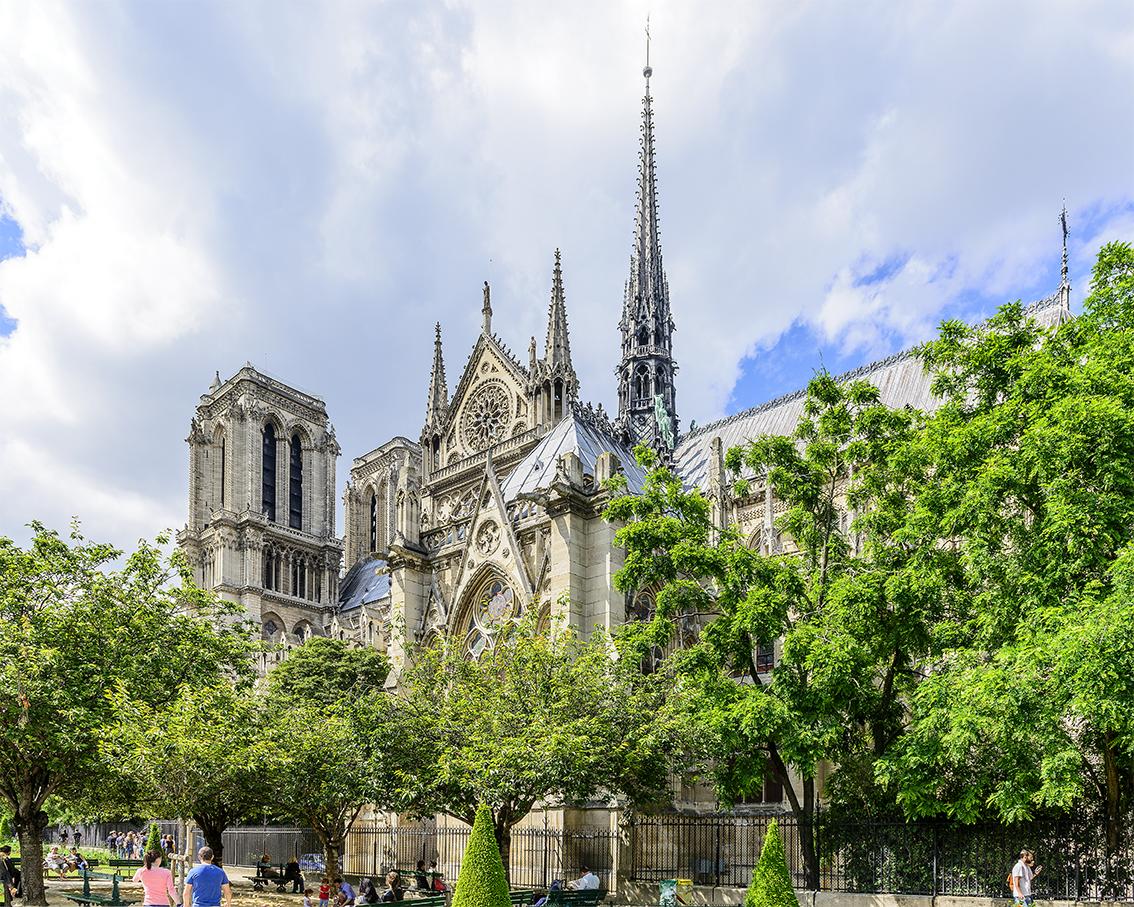
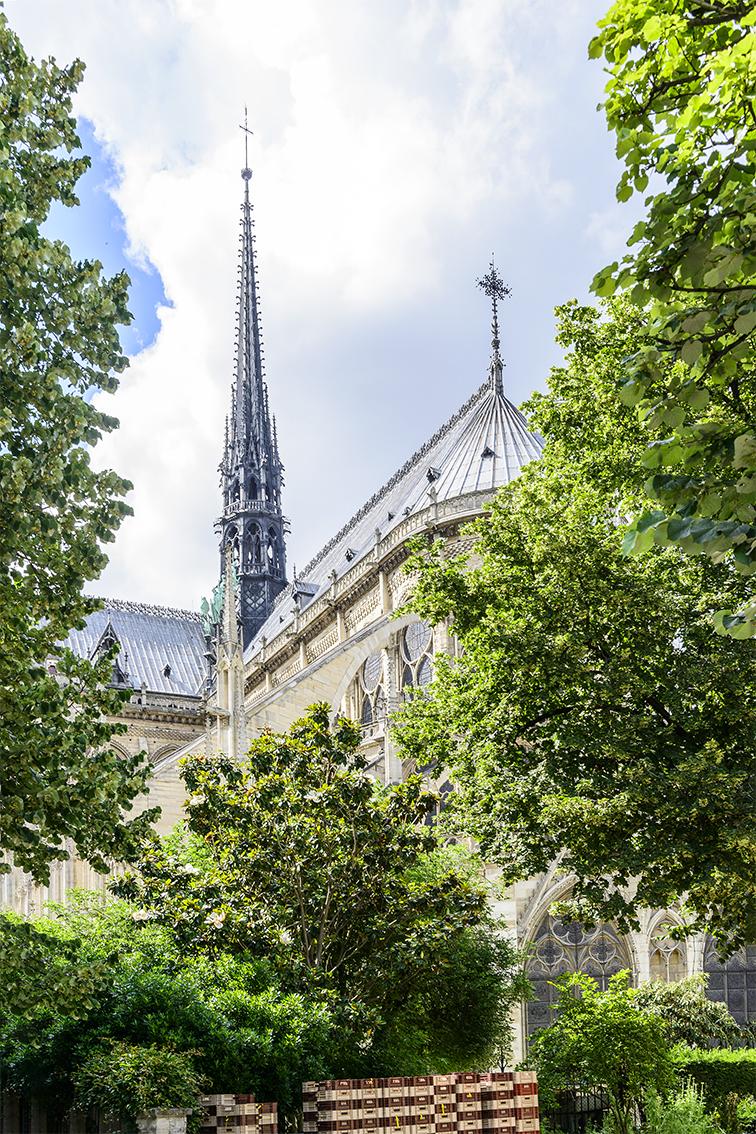
To a small square, which is behind Notre Dame.
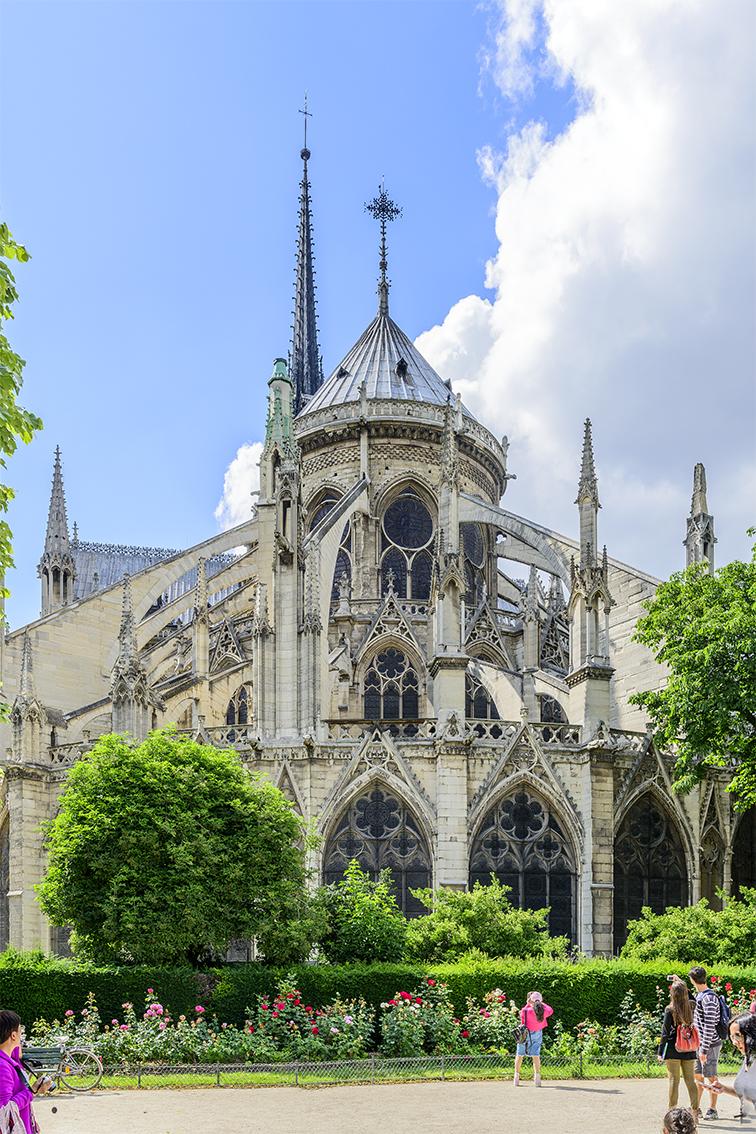
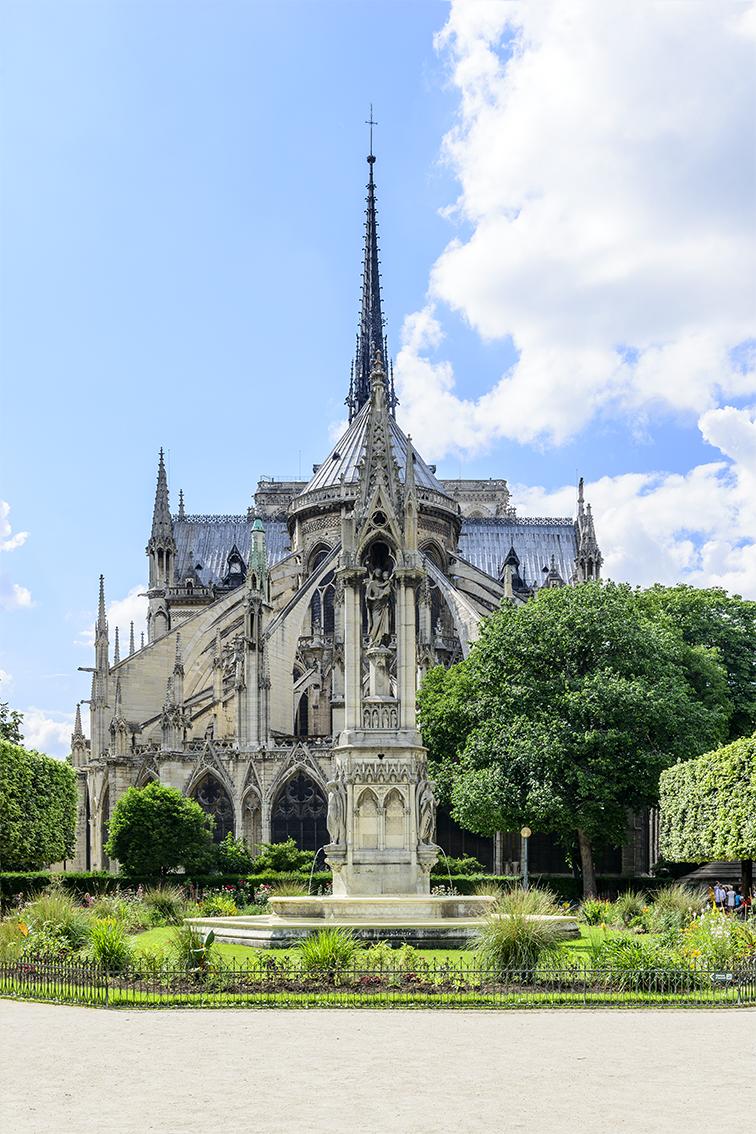
Notre Dame Cathedral is so beautiful and sacred from any direction.
This is Notre Dame Cathedral taken on a cruise on the Seine in 2012. It looks pretty good, and I'll show it to my friends too.
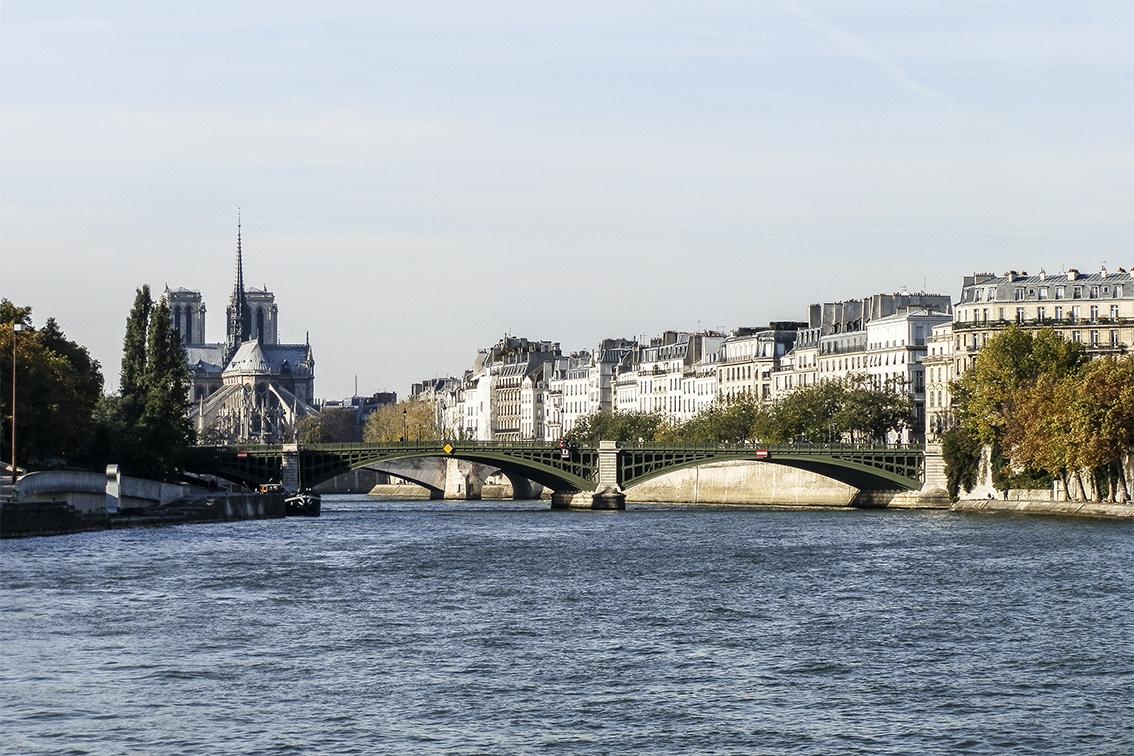
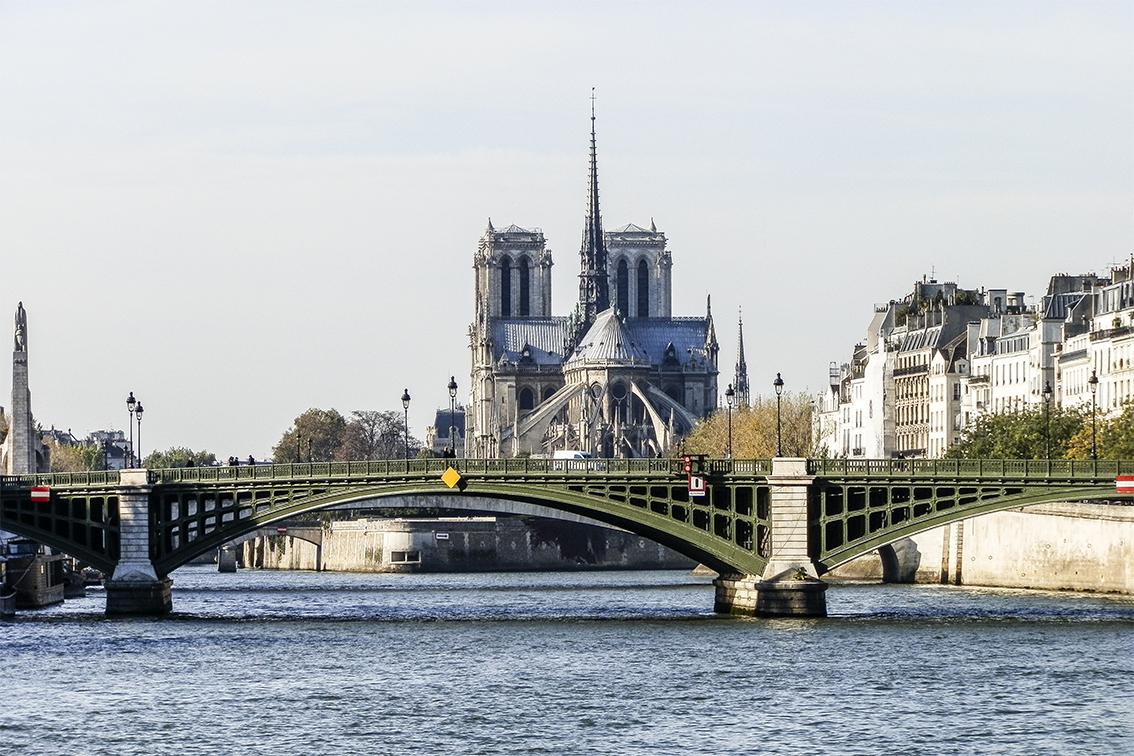

Notre Dame Cathedral is a symbol of ancient Paris. It stands on the banks of the Seine River and is located in the center of the entire city of Paris. It shines with the wisdom of the French people and reflects people's pursuit and yearning for a better life.
It's almost 5:00 pm. After playing all day, I'm really tired. Everyone sat in the chairs and rested. I checked Google Maps, and I can take the subway line 4 back to the Paris Opera.
After sitting for a while, I was ready to go to Mary Bridge Station of Metro Line 4.

When walking across the bridge across the Seine, I saw many entertainers performing their stunts on the bridge, including roller skating and magic tricks.
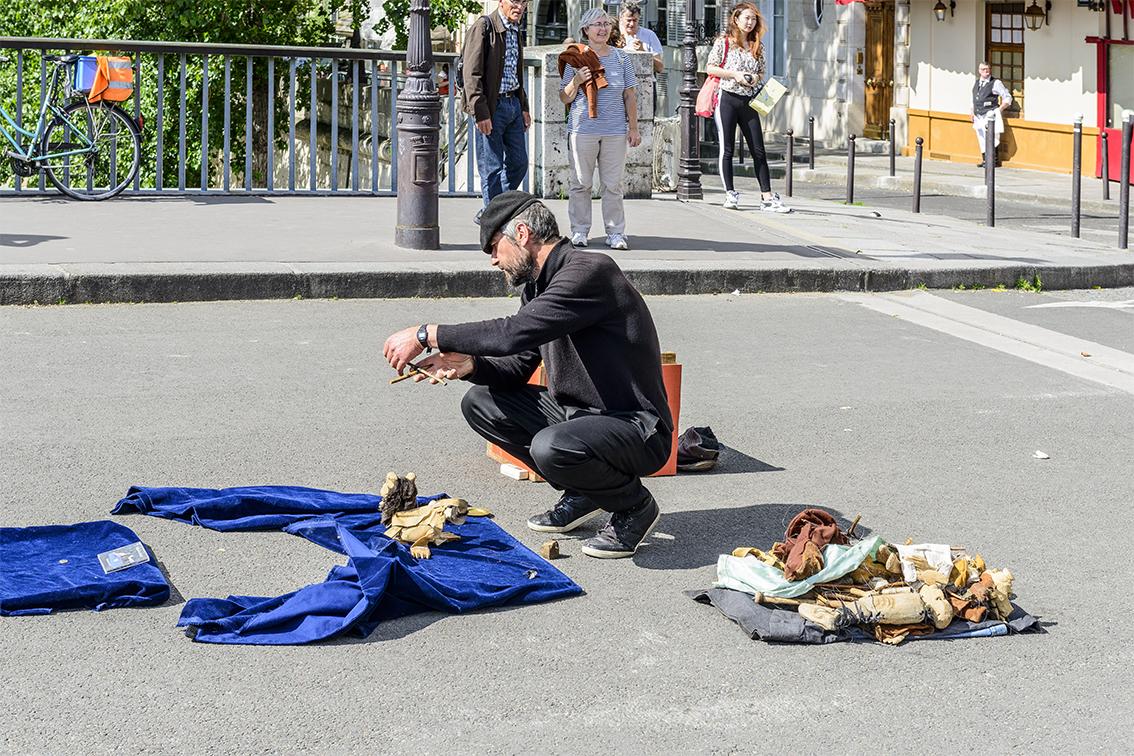
After crossing the bridge, I saw a row of small painting and calligraphy stalls by the bank of the Seine.
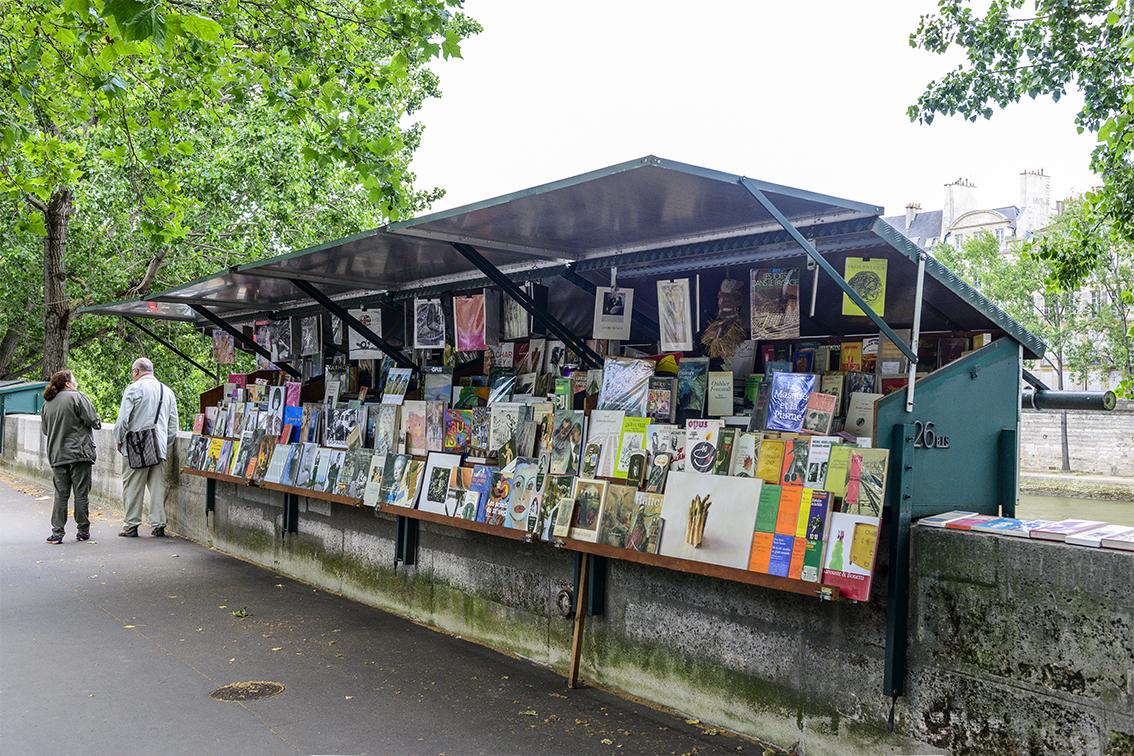
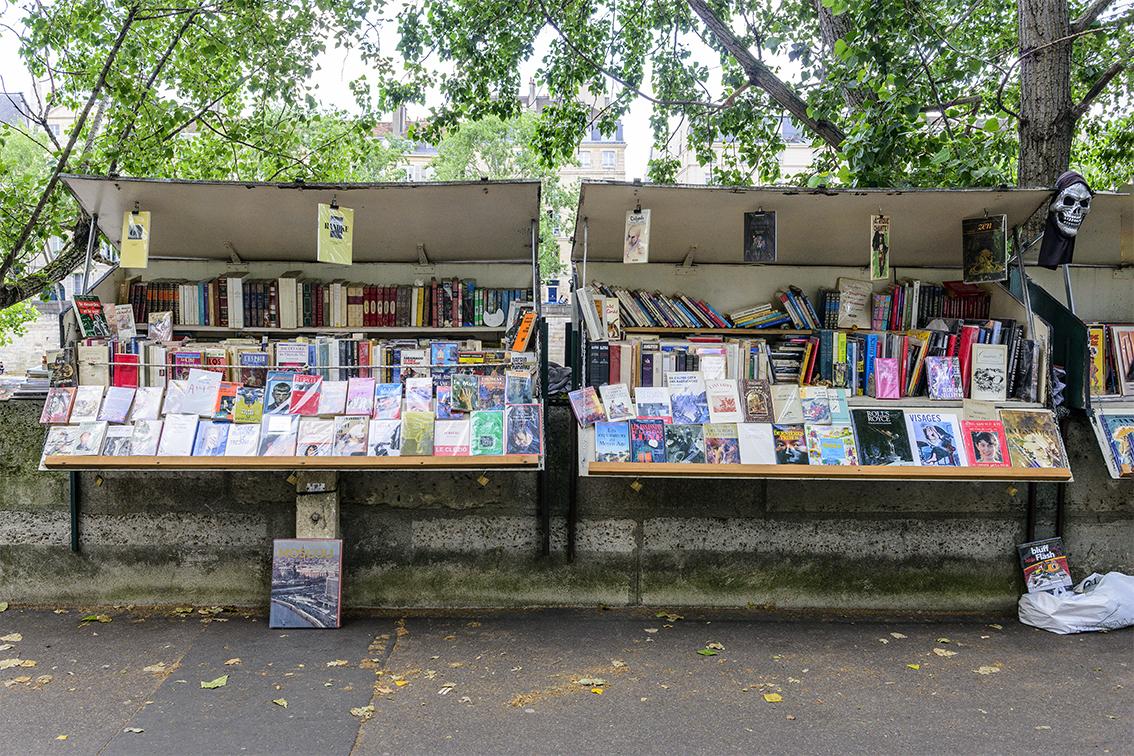
They are green switchable tin boxes fixed on the handrails of the river embankment. Each is about 2 meters long and half a meter high, with a uniform shape and uniform color. Usually, stall owners open the boxes and sell some old antiques, books, postcards or some paintings. When closing the stall, they close the boxes, lock them, and go home. I remember that these green boxes were introduced in CCTV's "Chia Da Variety" program in the early years. The host of that program was Cui Yongyuan, and there was a row of green boxes by the Seine River in the picture. He asked the audience to guess what the boxes were for, and one audience member answered very clearly. Cui Yongyuan was also a little surprised. After asking, he learned that the audience had lived by the Seine for several years.
Arrived at the Ponte Marie subway station. There are no manual ticket sales on the Paris subway, and there are many choices on the automatic ticket machines, so it is not easy to figure it out for a while. Afraid of making a mistake, I asked a lady to buy a ticket for us. After the lady finished the operation, she hurried away and waited for a while before throwing up the ticket. After taking the ticket into the station, I first figured out the direction of the ride before coming to the waiting hall.
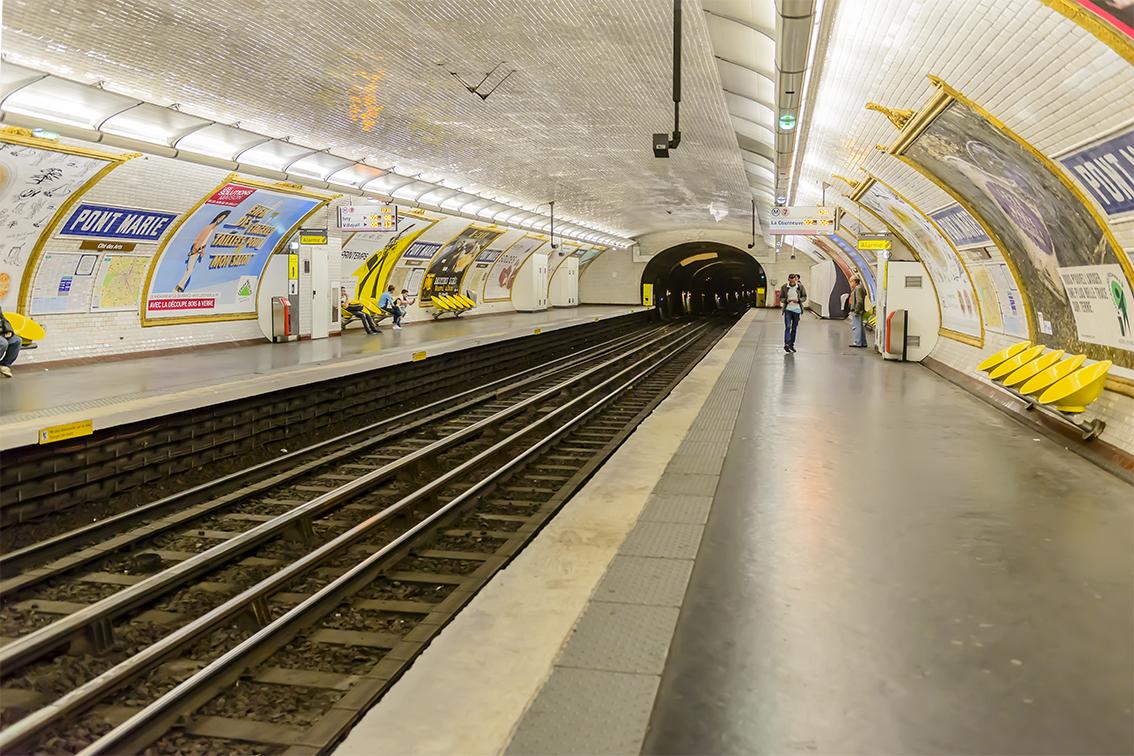
The Paris Metro has been running since 1900 and has a history of more than 100 years. The station covers a small area and does not pay attention to style. The trains are also a little old, but they do not affect the operation. Soon you will arrive at the Paris Opera House. Walking out of the subway station is the Opera Square.
The four ladies were very excited and said: "Today we are in Paris, we also took the boat, the bus, and the subway." Walking to the small street behind Galeries Lafayette general merchandise, there are many Chinese restaurants. Entering a small and clean Chinese restaurant, Mr. Long said she was treating. This meal was really comfortable. First, I only had some dim sum at noon, and second, I came to France for group meals these days. What impressed me most was a plate of "Shanghai small green vegetables", 7 euros. The restaurant owner's surname is Yang, and I saw that the couple were busy and busy, and the chef and service were all inclusive. After talking, it is learned that their ancestral home is Guangdong, but their parents came to Cambodia in their early years. They came to Paris in the 1990s. As soon as you hear it, they are overseas Chinese who fled to France during the Khmer Rouge period.
It's time to meet up, take the car back to the hotel to rest. What an unforgettable and beautiful day!
Postscript:
On April 15, 2019, the Notre Dame Cathedral in Paris under maintenance caught fire. The cause of the fire was a failure of part of the circuit system of the bell tower. The fire caused the iconic spire to collapse, two-thirds of the roof was destroyed, and the entire building was severely damaged. The main structure of Notre Dame Cathedral is well preserved and is temporarily closed to the public.
On May 31, 2020, the square in front of Notre Dame reopened to the public. On September 15 of the same year, Notre Dame reopened its shops and resumed guided tours.
On March 5, 2021, Notre Dame Cathedral completed preparations for the restoration, and the restoration work officially began.
On April 15, 2022, the third anniversary of the fire damage to Notre Dame Cathedral in Paris, French President Emmanuel Macron inspected the reconstruction construction site of Notre Dame Cathedral and said that Notre Dame Cathedral is expected to reopen to tourists in 2024.
